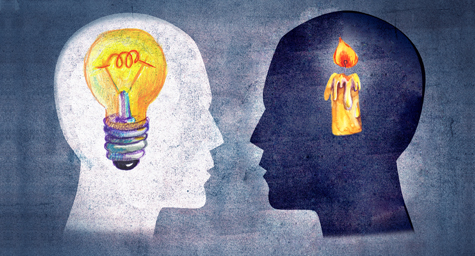What Media Pros See in Ads Isn’t Always What Consumers Perceive

If you’re in the media, your eyes may be deceiving you when it comes to advertising. Recent research conducted by Neuro Insight UK and News UK revealed that media professionals may have a different view and response to ads than the general public. It’s understandable that media-minded people would be more aware and engaged in an ad than the average consumer, but this skew in view could affect the effectiveness of the ads they produce. To help media pros open their eyes to the difference in ad perception, HuffingtonPost.com showed more from the recent research to help the media make ads that make a real impact on consumers.
A Closer View of the Research
For the research, three ads were shown to 50 employees of media agency Mindshare, along with 50 general consumers. Then, all of the participants wore headsets to test their brain response while watching the three ads on TV. Then, each group’s responses were collected and compared.
A Look at the Results
Overall, the results showed that media professionals were more interested, had more of an emotional response, and showed higher levels of memory encoding with the ads than general consumers. The only exception was that the media appeared much less engaged with each ad’s call to action than the consumers. Researchers attributed this to the possibility of consumers wanting to actually purchase the products in the ads.
Examining the difference in response even further, the first ad, for mobile provider Three, had the largest gap in response, with media professionals viewing it more positively than consumers. Researchers believe the dichotomy is due to the ad’s execution. Its final frame invites viewers to go online and create their own version of the ad and share it across social media. The media viewers found this aspect more memorable than consumers, perhaps because it piqued their professional interest in multi-channel campaigns or the fact that they wrongly assumed that consumers want to invest the time in this interaction while they’re watching on TV.
The same difference in response was seen with the second ad, for The Sun newspaper, whose request to subscribe online was processed much stronger by media professionals. This was attributed to their professional interest in creating these types of promotions.
And comparing the response for the third ad, for the National Trust, which featured kids going from boredom at the beginning, to active play by the end of the ad, the emotional response of consumers grew as the kids became livelier and happier. Yet media professionals had less of a positive emotional response as the ad progressed, perhaps because media pros are used to focusing on media-centric elements instead of emotional messages.
As you can see, media professionals may be viewing their ads differently from how they’re perceived by consumers. To avoid these misconceptions, the media needs to start thinking more like consumers and create ads with the consumer’s mindset in mind.
Learn how to understand the consumer’s view of media. Contact MDG.
MDG, a full-service advertising agency with offices in Boca Raton and New York, NY, is one of Florida’s top branding firms. MDG’s capabilities include print advertising, direct mail marketing, branding, logo design, creative, media buying and planning, radio and TV advertising, outdoor, newspaper, digital marketing, website design and development, online video advertising, infographic development, email marketing, video marketing, mobile marketing, content marketing, social media marketing, paid search marketing, and SEO. To learn about the latest trends in advertising and branding, contact MDG.
